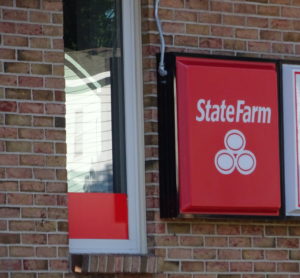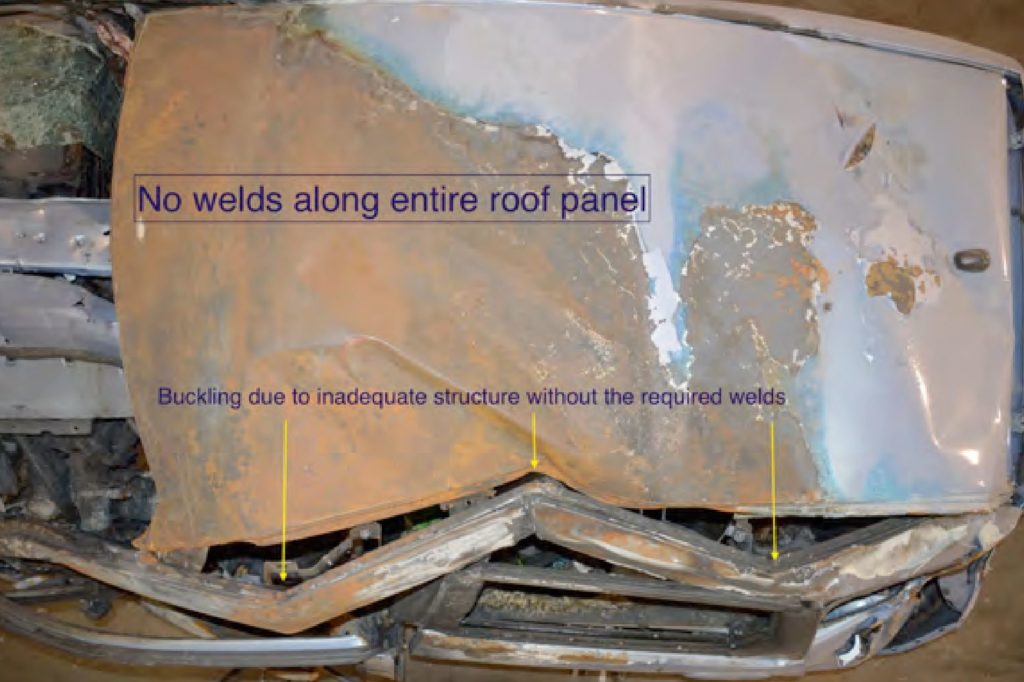
UPDATE: Couple in $1M Texas body shop lawsuit drop case against State Farm — but only temporarily
By onBusiness Practices | Insurance | Legal | Repair Operations
A couple suing a Dallas body shop for a collision repair which failed to follow OEM procedures has dropped a related lawsuit against State Farm — but the case will return, a spokesman for the plaintiff’s attorney said.
Matthew and Marcia Seebachan and State Farm will each pay their own attorney’s fees under an Aug. 17 Eastern District of Texas order granting their Aug. 15 notice of dismissal of an Aug. 2 lawsuit.
The case was dismissed without prejudice, which gives the Seebachans and attorney Todd Tracy (Tracy Law Firm) the chance to refile it should they wish. And they will, according to Tracy Law Firm spokesman Robert Riggs.
“This is strictly a procedural move,” Riggs said. The case against State Farm would have delayed the Sept. 25 trial for the Seebachans’ case against John Eagle Collision Center, Riggs said.
“Once that’s done, he’s going to refile against State Farm,” Riggs said.
State Farm reimbursed the 2012 hail damage repair in which the body shop bonded a replacement roof to a 2010 Honda Fit rather than using the welds dictated by Honda OEM repair procedures, according to records and the deposition of John Eagle Collision Center director Boyce Willis.
An expert for the plaintiffs said the use of adhesive — thought to be 3M’s 8115 — compromised the roof’s ability to manage collision energy for the unibody vehicle, leading to a more severe collision experience for its subsequent owners, the Seebachans.
The couple was trapped inside the burning Fit after crashing into a hydroplaning 2010 Toyota Tacoma. (Editor’s note: All highlighting in hyperlinked documents done by Tracy Law Firm; some redactions for privacy done by Repairer Driven News.)
The Seebachans sued John Eagle Collision for more than $1 million, alleging negligence.

However, shop and insurer estimates shared by Tracy’s firm do not appear to indicate a direction or suggestion by State Farm to use adhesive. The lawsuit keyed off of Willis’ deposition comments about the power an insurer can have over a collision repairer and accuses State Farm of requesting that particular repair.
A. (Adhesive) is — it is a accepted repair alternative, based on our cars and insurance certifications.
Q All right. And let’s have an agreement today that we don’t use the word “insurance.” Can we — is that cool?
A. Well, unfortunately we’re guided by insurance.· So — the — if you brought your car into my shop, right, the insurance company’s going to dictate what — how we’re going to repair your car.
Q. I understand. But the — but you — your — as a certified body shop, you have to — you — the — the insurance company cannot trump the OEM specifications, correct, sir?
A. Yes, they can.
Q. Where does it say that?
A. By not paying the bill.
The case also states that “close attention should be paid to the $3,580.31 discount that John Eagle gave to the Defendant.”
The lawsuit called State Farm the “‘neighbor from hell,'” and Tracy alleged the carrier “secretly and covertly plays Russian Roulette with its customers and the public by forcing body shops to choose their profits over the safety of the motoring public.”
Apparently seizing on that litigation, the group Texas Watch called upon the Texas Department of Insurance to investigate an insurance industry it says engages in “corner cutting automobile repairs.”
“The purpose of insurance is to have our property, safety, and lives restored after a crash,” Texas Watch Deputy Director Tori Sommerman said in a statement Thursday. “When insurers prioritize the bottom line, and pressure body shops into unsafe, shoddy repairs, Texans’ lives are put at risk.
However, Willis in the deposition repeatedly seems to suggest that the decision in the Seebachan repair was the shop’s, arguing that bonding the roof was better than the welds Honda demanded and describing bonding roofs as more or less a standard operating procedure at the shop.
Q. … Who approved 3M 8115 for use on Honda vehicles, specifically the 2009 to 2013 Honda Fit? Who approved it?
A. Are you talking about as a manufacturer or —
Q. I — at the collision center. Because no one at Honda has approved the 3M 8115 product to be used.
A. That would be the collision center.
Q. Who at the collision center approved it? Who did that?
A. Back in 2012, it would have been (Willis’ supervisor). …
***
A. That’s the way they (Honda) want their cars. But the market’s changed, process has changed, and —
Q. I understand that may be the case. But at the end of the day, John Eagle says that, We’re going to comply — we’re going to build your vehicle back and repair your vehicle back to the way the OEM specifies, right?
A. Bonding is better than welding.
Q. I understand you feel that way, but —
A. I know that way.
Featured image: The side of a State Farm Agency in Kentwood, Mich. is shown. (John Huetter/Repairer Driven News)
